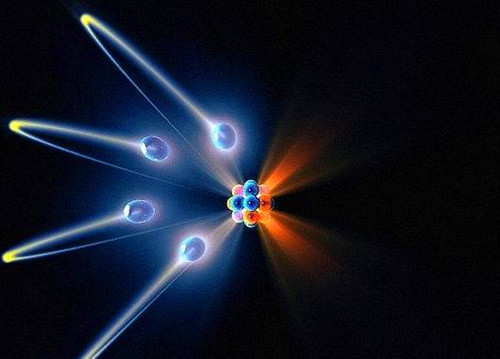It is all, as you can see, just a little unwieldy, but it is the simplest model that can explain all that happens in the world of particles. Most particle physicists feel, as Leon Lederman remarked in a 1985 PBS documentary, that the Standard Model lacks elegance and simplicity. "It is too complicated. It has too many arbitrary parameters," Lederman said. "We don't really see the creator twiddling twenty knobs to set twenty parameters to create the universe as we know it." Physics is really nothing more than a search for ultimate simplicity, but so far all we have is a kind of elegant messiness—or as Lederman put it: "There is a deep feeling that the picture is not beautiful."

The Standard Model is not only ungainly but incomplete. For one thing, it has nothing at all to say about gravity. Search through the Standard Model as you will, and you won't find anything to explain why when you place a hat on a table it doesn't float up to the ceiling. Nor, as we've just noted, can it explain mass. In order to give particles any mass at all we have to introduce the notional Higgs boson; whether it actually exists is a matter for twenty-first-century physics. As Feynman cheerfully observed: "So we are stuck with a theory, and we do not know whether it is right or wrong, but we do know that it is a little wrong, or at least incomplete."












